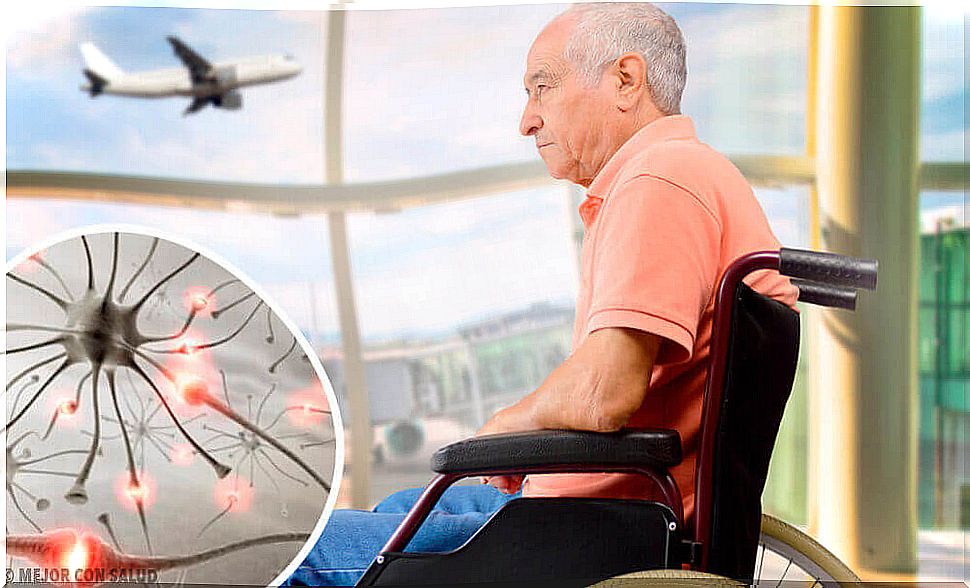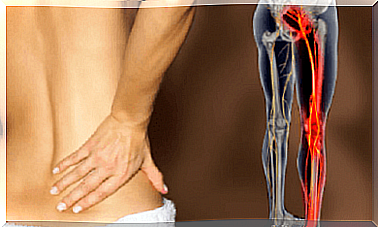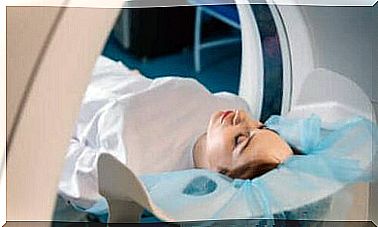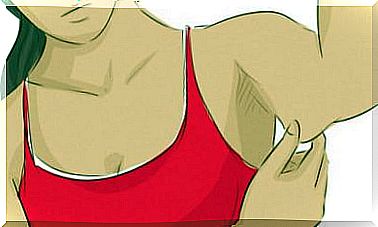Huntington’s Disease, What Is It?
Huntington’s disease is an inherited neurodegenerative disorder characterized by the onset of motor, cognitive and psychiatric symptoms.

Huntington’s disease begins around the age of 30 or 40, with more or less rapid progression to death.
Other names given to this disease are “Huntington’s disease” and “Huntington’s chorea”. The latter term refers to the type of motor alterations typical of the disease, choreic movements.
Huntington’s disease: transmission
Huntington’s disease is said to be inherited autosomal dominantly, meaning that the modified gene “has more strength” than the unaltered gene. Thus, transmission of a single defective copy from either parent will cause the disease to develop.
On the other hand, the term “autosomal” indicates that the alteration is not found on the sex chromosomes. In fact, the genetic alteration responsible for the disease is found on chromosome 4.
To better understand this, let’s see the following example. In a couple made up of a man with Huntington’s disease and a woman without Huntington’s disease, the child will have both copies of the normal gene, while at least one of them will have mutated.
What if they have a child? There will be a 50% chance that the healthy gene from the father will join one of the genes from the mother. In this case, the child will not inherit the disease . And on the other hand, there is a 50% chance that the child will inherit the mutated gene. In these cases, he will develop the disease.
It should be noted that in Huntington’s disease the penetrance is around 95%. This means that almost everyone with a mutated allele develops symptoms of the disease.
Huntington’s disease: the cause

It is due to the abnormal expansion of the trinucleotide CAG, in the huntingtin gene, located on chromosome 4. In most cases, up to 39 copies are produced, which is indicative of the disease.
The mutation causes the appearance of a mutant huntingtin protein which causes direct and indirect neurological damage.
Huntington’s disease: its evolution
The disease usually starts between the ages of 30 and 40. Still, there are cases when the disease develops during childhood or adolescence.
In addition, there is also evidence of the course of the disease in people over 55 years of age. In short, the age at which the first symptoms appear is variable.
Huntington’s chorea moves slowly, but inexorably, toward death. As it progresses, more than one type of symptom or others may predominate, depending on the person.
First clinical manifestations
The first clinical manifestations are not particularly striking. Insomnia, restlessness, anxiety and even small changes in behavior are the first symptoms.
Irregular hand and foot movements (sudden hits on objects) and tremors are typical of this stage.
Disease progression
As the disease progresses, the motor symptoms become more pronounced and difficult to control.
- Choreic movements: involuntary movements of the extremities, neither rhythmic nor regular, although they can vaguely recall the dance.
- Bradicinemia : the slowness to initiate and develop voluntary movements.
- Dysarthria : difficulty in articulating words and sounds.
To these problems are added cognitive and psychiatric alterations. On the one hand, on the cognitive level, various functions can be modified.
- Language disorders. With difficulty in repeating, naming, forming complex sentences. These problems, like motor disorders, very slightly, almost imperceptibly, begin to progress.
- Changes in the ability to organize and perform tasks. Problems also arise in recognizing and processing one’s own emotions and those of others.
- Difficulties in spatial orientation. It is relatively common for patients to collide with objects (corners, tables, etc.).
Finally, psychiatric disorders are almost constant and can be present even before the onset of the first symptoms of the disease. Anxiety and depression are mainly associated with the course of the disease. Forms of psychosis and apathy can also appear …
Final stage of the disease
In the final stage of the disease there is a complete loss of functionality. Patients with advanced Huntington’s disease require 24 hour care. At this stage, patients are unable to communicate or even think, except for brief moments of lucidity.
Although the chorea in these cases has usually disappeared, it is replaced by stiffness and bradykinesia. They need help feeding with bladder catheters, among other things.
At this stage, the risk of aspiration pneumonia is very high. Death usually results from complications of the disease or from suicide.
Huntington’s disease: the diagnosis

The diagnosis of this disease is established after physical examination (with particular attention to the neurological examination). At the same time, the clinical history should be assessed, especially the family history.
On the other hand, a psychiatric evaluation is necessary, which will help the doctor to further explore the emotional health of the patient and to determine possible difficulties.
Genetic studies are also needed. They should be performed if the patient has motor symptoms typical of the disease.
The result of these tests should be communicated to the patient, recommending that the family also be informed, given the implications.
Huntington’s disease: the treatment
Currently, there is no treatment to cure the disease. The treatment aims to act on the symptoms and improve the quality of life of these patients. In this regard, it is essential that patients and their families receive psychological support.
Medicines like tetrabenazine, which reduce choreic movements, are used to treat movement problems. However, they can make psychiatric disorders worse. To treat the psycho-emotional aspects of the patient, antidepressants, anxiolytics and mood stabilizers are used.
It should be noted that some medications like haloperidol also have positive effects on movement disorders.
Over the past 20 years, nearly 100 clinical trials have been carried out with more than 49 different active ingredients. However, less than 4% of these trials gave encouraging results.
Today, the most promising results may come from targeted therapy against the DNA or RNA of the mutant protein that causes the disease.









